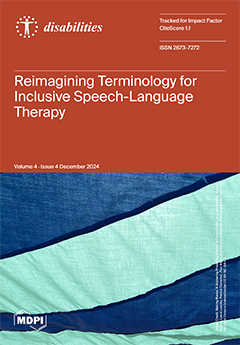Background: The aim of this study is to understand what children with a disability like and dislike about participating in a gymnastics program, and to understand the views of the adults supporting the program.
Methods: Children with a mild intellectual disability
[...] Read more.
Background: The aim of this study is to understand what children with a disability like and dislike about participating in a gymnastics program, and to understand the views of the adults supporting the program.
Methods: Children with a mild intellectual disability (aged 5–12) from a primary school providing special education participated in one of four gymnastics programs (1 h/week for 5 weeks) at a gymnastics centre. The program included ~25–50 children per group, with ~20 adults providing support, including gymnastics coaches, teachers, and adult students on placement. To evaluate the program, children (11–12-year-olds;
n = 51) were invited to complete a written two-page reflection, and the adults were invited to participate in one of three focus groups.
Results: 150 children attended one of four programs. Twenty-six 11–12-year-olds participated in the evaluation (
n = 26/51, 51%), and, from the written responses, the themes of ‘individual preference’ and ‘resilience’ emerged. It was found that 96% (
n = 25/26) reported they would like to do more gymnastics, 88% (
n = 23/26) reported positive feelings during gymnastics, and 65% (
n = 17/26) expressed concerns such as feeling tired or hot. Twenty-three adults participated in a focus group. Key themes included the positive impact the program delivery had on the children’s participation; and the positive impact on coaches, students, and teacher’s disability attitudes and knowledge.
Conclusions: This gymnastics program was well-liked by children with a disability. To optimise participation, promoting individual choice and control may be of benefit.
Full article





